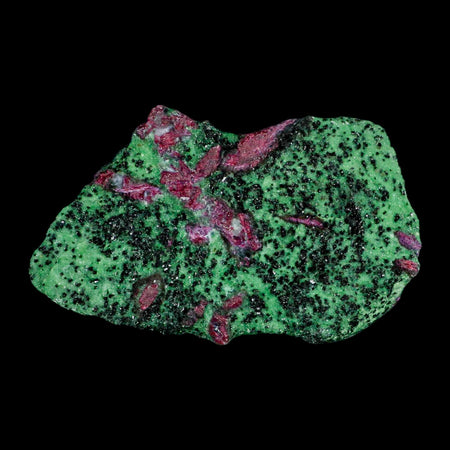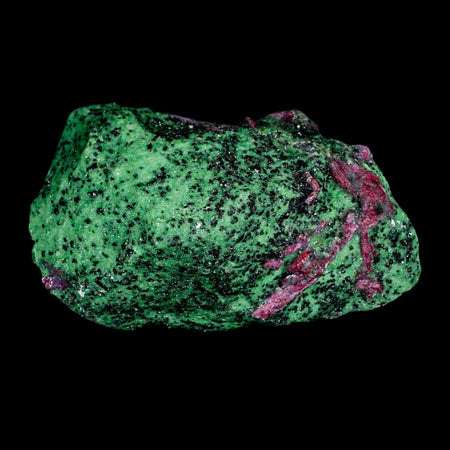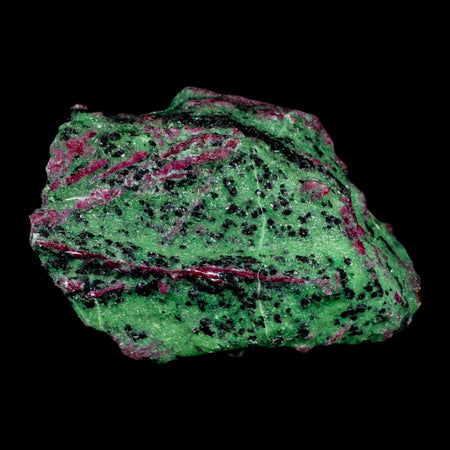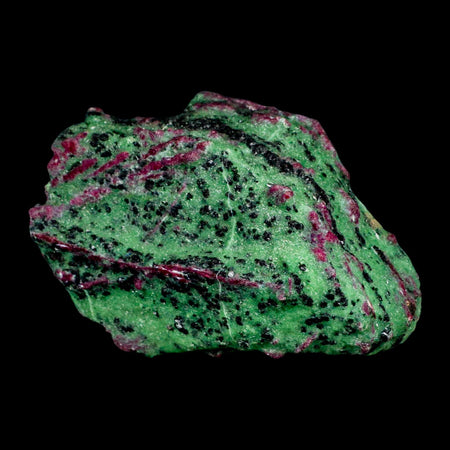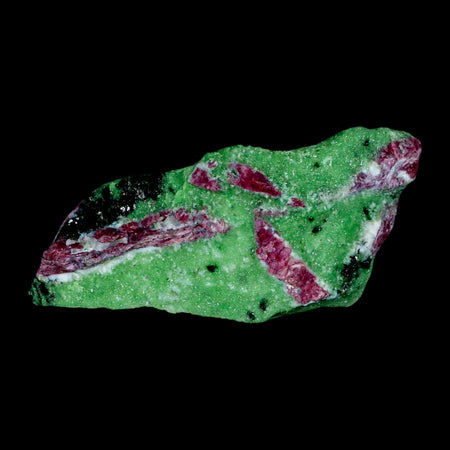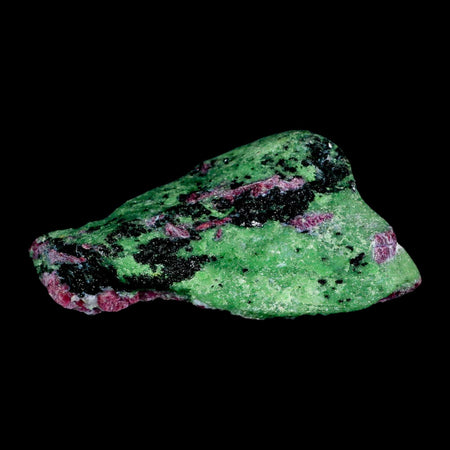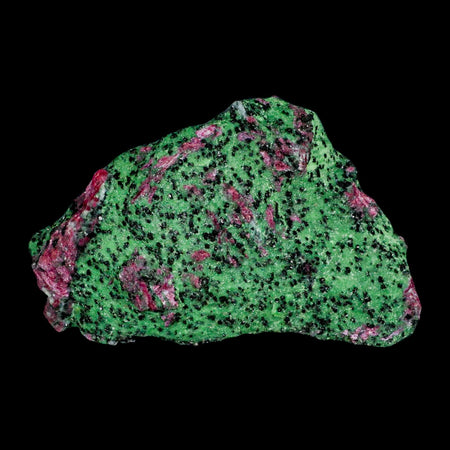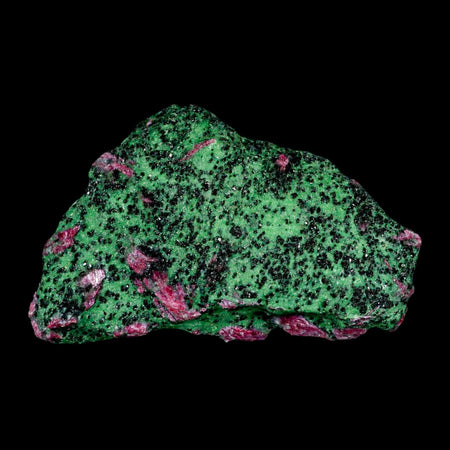Ruby In Zoisite Mineral Collection
Ruby in Zoisite is a naturally occurring mineral aggregate, a rock composed of more than one mineral, specifically characterized by the presence of both ruby and zoisite, often with an additional component of black hornblende. This unique combination results in a striking visual appearance, making it a popular material for ornamental and lapidary purposes. The name itself, "ruby in zoisite," is descriptive of its composition, highlighting the two primary minerals that define it
- Ruby: A red variety of the mineral corundum. Its characteristic red color is due to the presence of chromium impurities within its crystal lattice. In ruby in zoisite, the ruby typically appears as opaque to translucent, often dark red to reddish-brown crystals, sometimes exhibiting hexagonal outlines. These rubies are generally not of gem quality due to their opacity and inclusions, but their color provides a strong contrast to the green zoisite.
- Zoisite: A calcium aluminum hydroxyl sorosilicate mineral. Zoisite typically occurs in various shades of green, from light to dark, and can also be gray, brown, or pink. In ruby in zoisite, the zoisite component provides the dominant green matrix in which the ruby crystals are embedded. The green color is often attributed to the presence of vanadium or chromium.
- Hornblende (Pargasite): A common amphibole mineral, often appearing as black, opaque crystals or masses within the aggregate. This mineral adds a dark, contrasting element to the green and red, enhancing the overall aesthetic appeal. While not always present in significant amounts, its inclusion is characteristic of many rubies in zoisite specimens.
The formation of ruby in zoisite is a result of metamorphic processes. It typically forms in regional metamorphic environments where pre-existing rocks, often rich in aluminum and calcium, are subjected to intense heat and pressure. The specific conditions lead to the crystallization of zoisite and corundum within the same rock body. The presence of chromium, necessary for the red color of ruby, is often derived from surrounding ultramafic rocks or chromium-bearing minerals.


